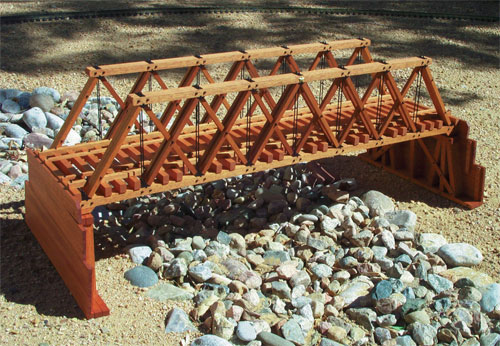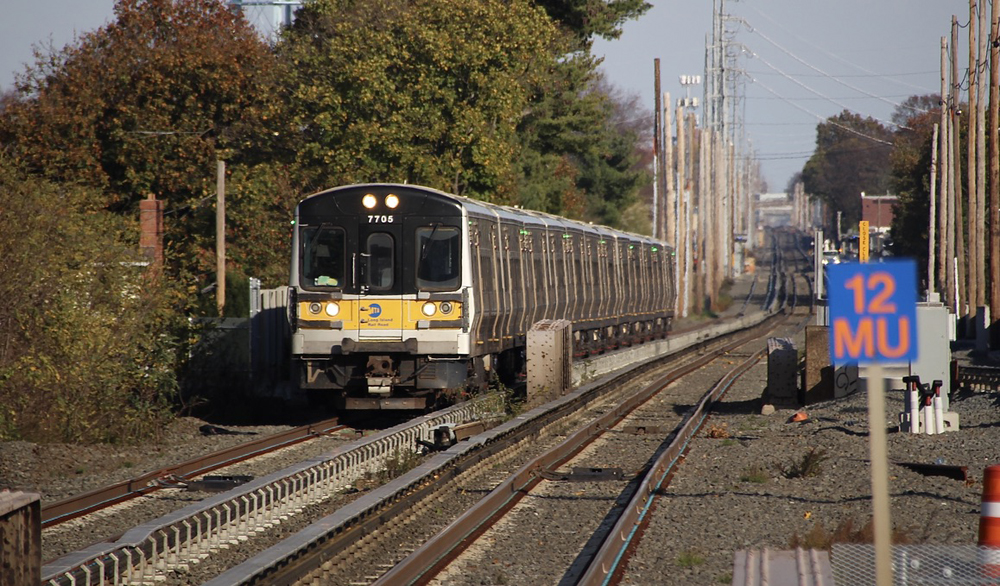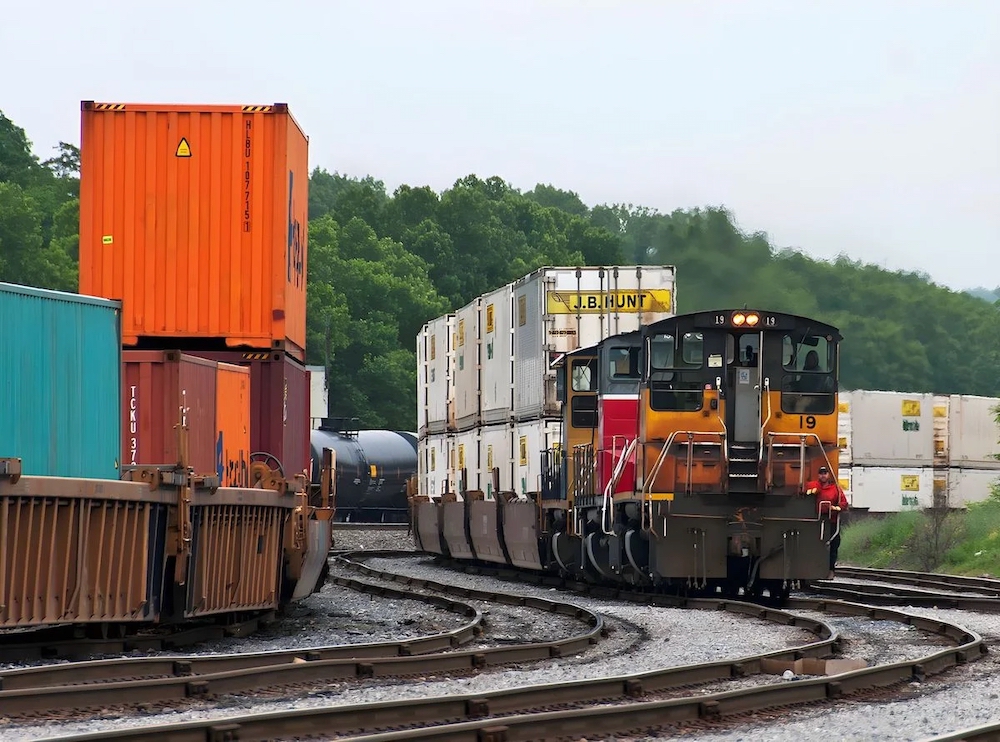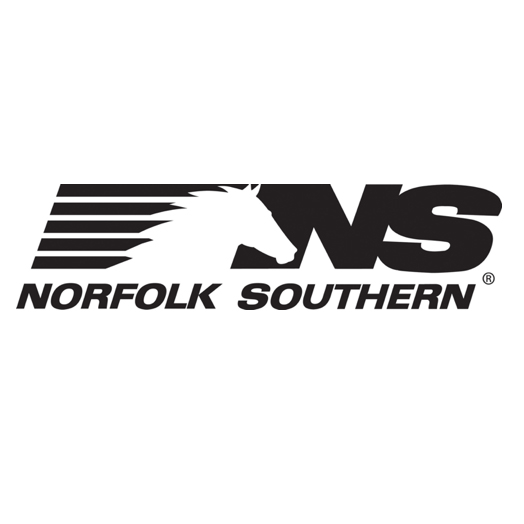1:20.3 scale, Howe pony truss bridge
Lone Star Bridge & Abutment
PO Box 122041
Arlington TX 76012
Price: Bridge, $395; abutments cost $95/pair. Prices include shipping in mainland US.
Web site: www.lonestarbridge.com
Howe pony truss bridge; made of mahogany with brass hardware and castings; based on the D&RGW bridge over Hermosa Creek, near Durango, Colorado; timber abutments optional. Dimensions: 36″ long x 73/4″ high x 91/8″ wide. In 1:20.3 scale, this works out to 60’11” x 13’1″ x 15’3″, respectively
Pros: Accurately dimensioned model of attractive prototype bridge; exquisite woodwork; sturdy construction
Cons: Some minor simplification of details
This bridge, a somewhat simplified model of the Hermosa Creek bridge north of Durango, has been a staple of Lone Star’s line for 10 years. This Tenth Anniversary version of the bridge acknowledges the wide availability of large, 1:20.3-scale equipment, and has been redesigned from 1:24 scale to 1:20.3. As such, it is a hefty 36″ long, with 7″ of clearance between the trusses. This will accommodate the largest 1:20.3 locomotives.
The entire bridge is made from oiled mahogany members, fitted together with very tight joints. It almost looks like a piece of precision machinery. Hardware is blackened brass. Bearing blocks are keyed into slots in the beams for absolute rigidity. Truss rods add not only to the strength of the bridge, but give it an airy, highly detailed look as well. The quality of work and appearance are above criticism.
The optional timber abutments are likewise faithfully scaled from the Hermosa site. The bridge on its abutments makes a spectacular structure and I have seen people who leave their Lone Star bridges on coffee tables rather than put them outside. It’s an understandable impulse.
Rabid scale adherents will find a few small things to quibble with. The bridge simplifies a few details, so it wouldn’t qualify as a dead-scale model. The most obvious compromise is in the ties. They are spaced to accommodate common sectional track, which makes perfect sense. Because of this, the edge of the bridge has a less “busy” look than the original. There are only two sets of bolts on either side of the bearing blocks, while the prototype has four per block. There is no X-bracing under the ties, a detail that most of us would eliminate anyway. Truss members are somewhat thinner than they should be, though most of us won’t be putting a scale ruler to it. And the brass star, Lone Star’s trademark, is of course not found on the original. All these are minor details and do not detract from the beauty and utility of the model, in my opinion.
On the whole, this is one of the finest wood bridges I’ve seen. Lone Star’s reputation for top-quality work remains unchallenged, and it’s great to have this finished, 1:20.3 scale bridge to accommodate those big Mikados. It would be the centerpiece of any railroad.














